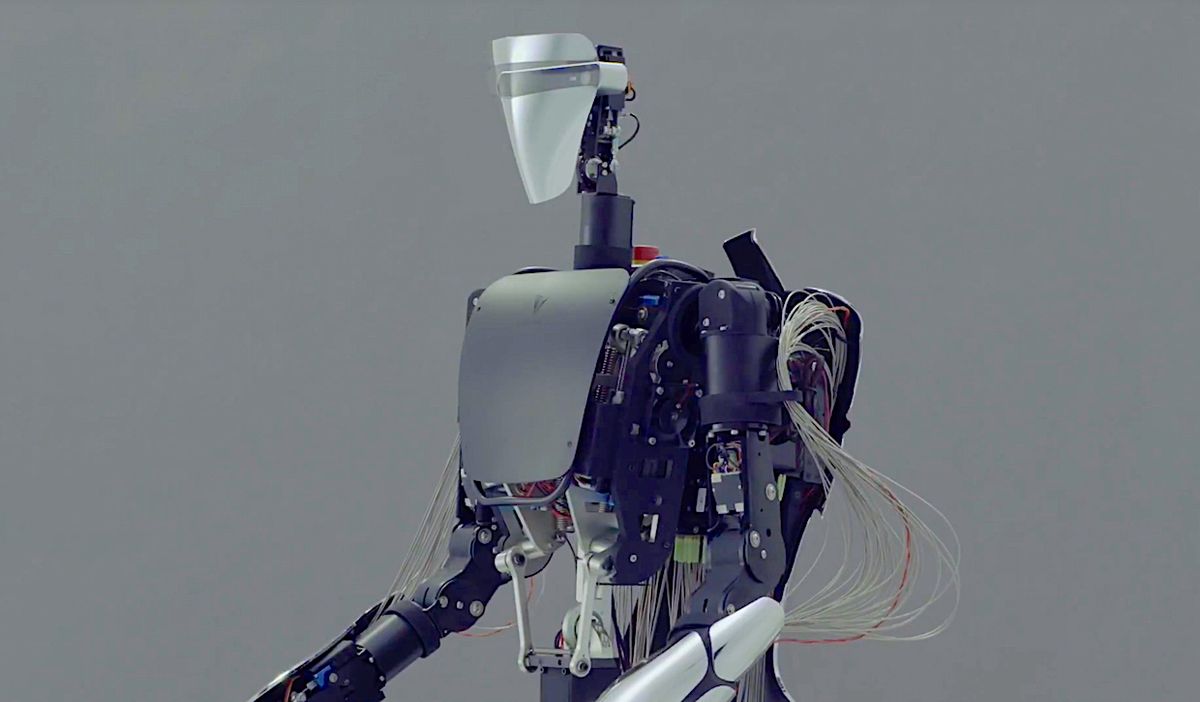Last Monday, we covered the new, updated, and way way better guidelines for the ANA Avatar XPRIZE. Since we were mostly talking with the folks over at XPRIZE, we didn’t realize that ANA (All Nippon Airways) is putting a massive amount of effort into this avatar concept— they’re partnering with JAXA, the Japan Aerospace Exploration Agency, “to create a new space industry centered around real-world avatars.”
AVATAR X aims to capitalize on the growing space-based economy by accelerating development of real-world Avatars that will enable humans to remotely build camps on the Moon, support long-term space missions and further explore space from afar.
These avatars will be essentially the same sorts of things that the Avatar XPRIZE is looking to advance: Robotic systems designed to operate with a human in the loop through immersive telepresence, allowing them to complete tasks like a human could without a human needing to be physically there.
JAXA says that they’re interested in the usual stuff, like remote construction in space and maintenance, but also in “space-based entertainment and travel for the general public,” so use your imagination on that one. The AVATAR X program will go through several different phases, beginning quite sensibly with some Earth-based testing, which will happen at a new lab to be built in what looks like an artificial impact crater, with a futuristic building somehow hovering in the middle of it:
Image: Clouds Architecture Office
Of course, JAXA is not alone with this telepresence robots in space idea—for years, NASA has been suggesting that Valkyrie-like robots (likely controlled through a combination of full teleop, assistive teleop, and autonomy) are the best way to get stuff done in space, or in other places where humans are too expensive and squishy. Here’s a NASA rendering, for example:

That’s probably a bit far into the future, but in the nearer term, Robonaut was also intended to take over routine space station tasks. Things are maybe not moving quite as quickly as NASA has been hoping, but rumor has it that there will be a follow-up Space Robotics Challenge happening at some point. At the pace ANA and JAXA are going, though, it’s looking like the plan is to have operational hardware on the ISS within the next several years, which could mean that Robonaut (if, once repaired, it returns to the ISS) will have a robotic buddy up there to help it get some useful work done.
The actual schedule for Avatar X is a little bit unclear— there’s supposed to be on-Earth hardware testing in 2019, testing on the ISS in “202X,” and then the Moon and Mars “in the future.” What we do know is that one of the companies involved, Meltin, has already commenced “full-scale development on the MELTANT avatar robot for deployment in space.” MELTANT is this shiny-headed dude:
Be it in space, on the moon’s surface, or on the surface of mars, long-distance remote control robots like MELTANT will protect astronauts from the dangers of space while lowering the high cost of space missions. It will bring about improvements in safety, efficiency, and cost effectiveness to contribute to the advancement of space technology and the creation of usable regions in space.
Here’s a sampling of what MELTANT is supposed to be able to do:
- At the space station (in low Earth orbit or while orbiting the moon)
- Supporting the lives of astronauts (by growing food, cooking, cleaning, etc.)
- Conducting scientific experiments
- Conducting all types of internal on-board maintenance
- In space hotels
- Assisting hotel operators with tasks (producing food, cooking, cleaning, etc.)
- Providing all types of service to hotel guests
- Services in Orbit
- Constructing large-scale satellites and space probes in Earth’s orbit
- Refueling, servicing, and repairing satellites in Earth’ orbit
- At a lunar/Mars base
- Building a base and doing maintenance on rovers and all other types of other equipment
- Conducting dangerous operations in exposed environments outside of the base
- Supporting the lives of people living there (by growing food, cooking, cleaning, etc.)
- Providing long-distance medical care (diagnosis, treatment, surgery)
- Conducting scientific experiments
- Providing long-distance moon experiences and more
So far, all of this is speculative, and MELTANT will need to prove itself here on Earth before proving itself anywhere else. As with all of these sorts of things, big ideas are easy, but getting robots to execute on them is hard. We’re glad that JAXA and ANA are putting some muscle behind this, and we’ll be tracking their progress carefully over the coming years.
[ JAXA ]
Evan Ackerman is a senior editor at IEEE Spectrum. Since 2007, he has written over 6,000 articles on robotics and technology. He has a degree in Martian geology and is excellent at playing bagpipes.



